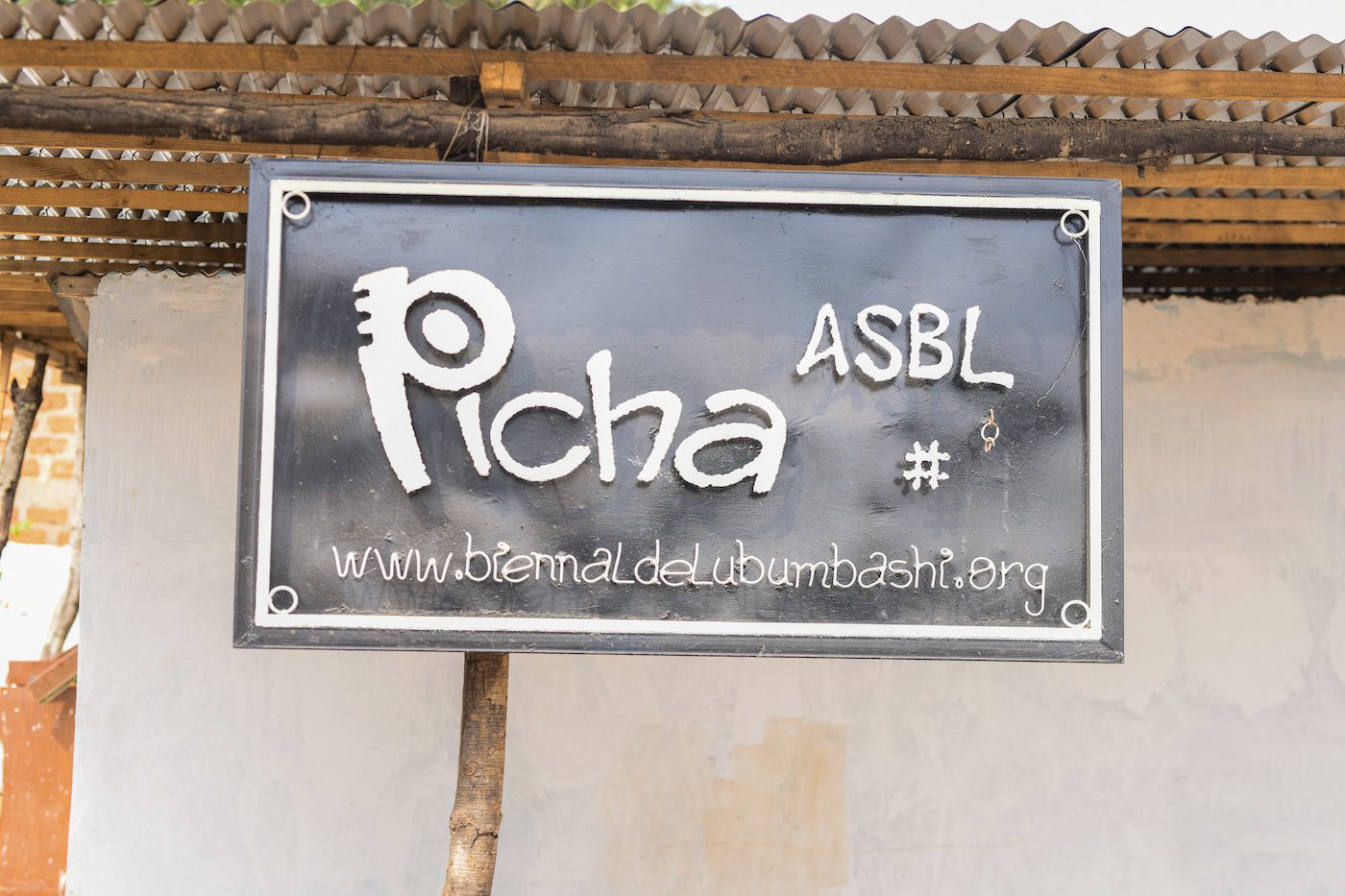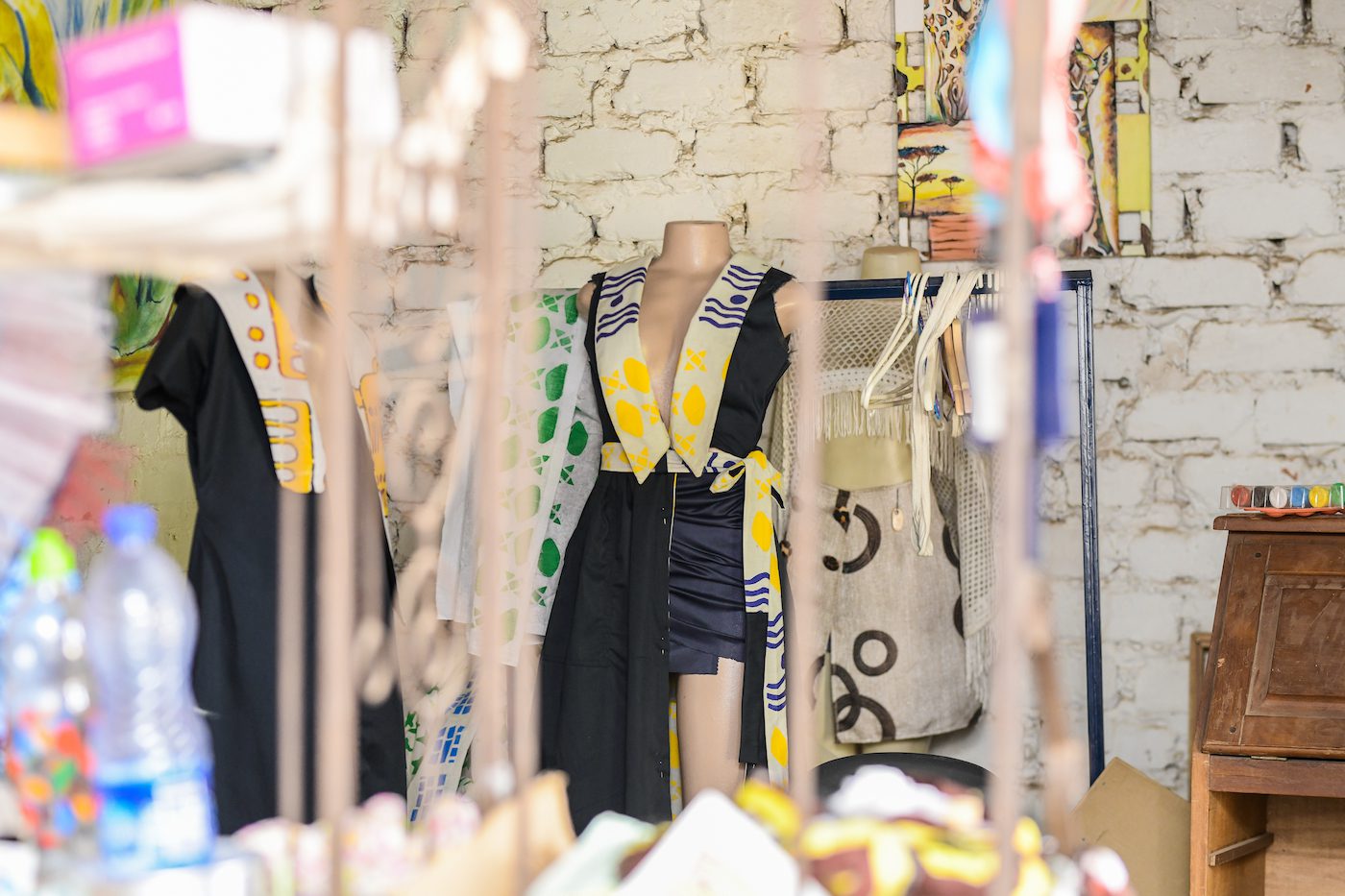In the run-up to the Biennale, C& mentee Gloria Mpanga takes a critical look at its relevance, history and curatorial concept.

Picha ASBL. Preparations for the 7th Lubumbashi Biennale. Courtesy of Nicolas, Photographer of the Biennale.
Lubumbashi, a city in the south-east of the Democratic Republic of Congo, is preparing to host the seventh edition of the Biennale de Lubumbashi this fall – “ToxiCity”, from October 6 to November 6. It is an opportunity to meet people, experiment, share, exchange experiences, and above all—according to Alexandre Mulongo, a founder member of Atelier Picha, which has organized the Lubumbashi Biennale since 2008—“build a network connecting famous, recognized artists from the North with artists from the South, so that they can be exposed to each other’s practices and grow together.”
Defined in the French dictionary as the “ability of a substance to cause a harmful, detrimental effect on an organism or organ” or a “substance which is unpleasant and acts like a poison,” toxicité (toxicity) may refer to various situations, such as the increasing occurrence of difficult, tense relations between people from the same “city” to the point that they begin to destroy any possibility of a culture of coexistence, or the relationship that human beings today have with Mother Earth, whose importance is overshadowed by their concern for development, or the environmental damage caused by human exploitation of the earth … As a “toxic character,” couldn’t “toxicity,” as a word, remind us of the “occult” role played by certain dishonest politicians who, in their maneuvering, might seek to distill the poison of division among the people, thus toxifying and destabilizing all relations within the “city”? What focus other than “toxicity” could there be for a biennale that wants to have standing in the local region—at a time when the conflict between Russians and Ukrainians is giving heft to the Russian adage “Don’t hang a Kalashnikov on the wall near where children are playing, because at the end of the game one of them will want to use it”?

Painting on fabric by Dan Kayeye, Merkal Abilwa, Gloire Ndoko, Mélissa Mujinga. Preparations for the 7th Lubumbashi Biennale. Courtesy of Nicolas, Photographer of the Biennale.
It was Franz Fanon who said, with good reason, that “Africa is a continent shaped like a gun whose trigger is in Zaire” (as the Democratic Republic of Congo, DRC, was once known). It is understandable that this would push the peoples of this country to become aware, in spite of their cultural diversity, of their role in trying to find and maintain economic, environmental, political, and sociocultural balance in the world, both now and in the future. It is a plea to go beyond ourselves and that which divides us, a plea that should be heard by politicians on all sides, so as to finally allow the DRC to respond, as it should, to the leadership role it is called to, in the attempt to find balance between opposing forces and the global order they demand.
This is the importance of this biennale, which focuses on what has become of Élisabethville (the old name for Lubumbashi, a city that is now considered the “cobalt capital of the world”). These are powerful words, long after the end of the colonial period, from different perspectives, and especially now that the DRC, which has been dubbed a “veritable geological scandal,” has set itself up, at COP26, as a “solution country” for the global climate crisis.

Coat made from mixed gabardine and printed Makwacha design, by Nilla Banguna. Preparations for the 7th Lubumbashi Biennale. Courtesy of Nicolas, Photographer of the Biennale.
Lubumbashi–DRC–World: “toxic city” or a “toxi-city?
Artist and founder member of Picha ASBL, Jean Katambayi explains: “The Lubumbashi model sets out to showcase the city, as we seek to engage the support of the sociopolitical powers that be, having observed how in African countries, politics tends to stand in indiscriminately for an entire administrative sphere.” This political mismanagement, at least in the cultural arena—and its “poisonous” use of culture as a tool to alienate people—was criticized at the Sovereign National Conference (CNS, 1990–92) by museologist Badi-Banga Ne-Mwine and journalist Charles Tumba Kekwo, who asked President Mobutu, from the CNS podium, to “extricate the country from cultural devastation” and steer clear of “a policy that has brought about the cultural malnutrition of our people.”[1]
Today, Gécamines (the successor to the Union minière du Haut-Katanga mining company) has gone into decline—though the company is impotent now, its large chimney still stands erect on the slag heap of a city bruised by years of pain and inundated with the ubiquitous ligablo kiosks, those small shops that say a great deal about the denaturing of a life now patterned by the dictates of ingenuity and the ideology of chance eloko pamba—i.e., “lucky is as lucky does”—for a people who have not forgotten the paternalistic era of Gécamines: How can we deny that Lubumbashi now meets all the criteria of a “toxic city” or a “toxi-city”? How can we fail to understand that poor political decisions definitely make life in the city toxic when we have watched Le Tribunal sur le Congo: Les audiences de Kolwezi (Milo Rau, 2021) or read the UN “Mapping Report,” which took stock of the most serious violations of human rights and international humanitarian law committed in the DRC between March 1993 and June 2003, violations that have so far gone unpunished?

Assembly of the puppets by Justice Kasongo. Preparations for the 7th Lubumbashi Biennale. Courtesy of Nicolas, Photographer of the Biennale.
Five curators, five different viewpoints at the 7th Lubumbashi Biennale
The idea of engaging a large team of curators to preside over the artistic direction of this biennale, whose intention is to be “discursive,” might suggest that all the fundamental questions will be tackled and cleared up inasmuch as the biennale can refer to a much greater diversity of viewpoints, perceptions, and judgments. From another angle, one might be tempted to think that one of the major problems still lingers on, since enlarging the group of curators does not address the thorny question of the condescending nature of this biennale, which will once again eye the problems of the Congo through the lens of artistic directors and curators who are non-Congolese or whose relationship with the Congo is as yet unproven. Is it a wish to depart at all costs from the path laid out by Toma Muteba Luntumbue, the curator whose spell as artistic director of the Lubumbashi Biennale was renewed to cover two consecutive editions (the fourth and fifth), and who paved the way for appropriation and integration at this biennial, via the “geographical recentering” that was required during his tenure?
At the same time, is it always necessary to turn to local curators, commissioners, or artistic directors to examine the “toxicity” in the world—viewed here as a “city”—in order to find aesthetic coherence both in the choice of artists and in the biennale’s different exhibitions in a world where “no one is a prophet in their own land”? Might we not be tempted to ask ourselves “Where is our own land?” in a world that is striving to be a big village—and to answer, “Here and elsewhere”?
Be that as it may, the 7th Lubumbashi Biennale augurs very well in that it offers a space for discussions on the question of “toxicity” and will allow artists from in and around Lubumbashi to make connections that will enable them to view their creativity from the outside and take their place in the global art market!
Gloria Mpanga is a journalist and blogger from the Habari DRC community. Since May 2022, she is participant of the C& Mentoring program in Lubumbashi, where she lives and works.
Translated by Simon Cowper.
Read Picha Colllective’s response to this article here.
[1] Costa Tshinzam, “Comment la culture au Congo peut progresser en tirant les leçons du passé,” Contemporary And, February 19, 2019, https://contemporaryand.com/fr/magazines/how-congos-culture-can-move-forward-learning-from-the-past/#:~:text=Dans%20les%20ann%C3%A9es%201970%2C%20le,l’emprise%20de%20la%20propagande.
More Editorial